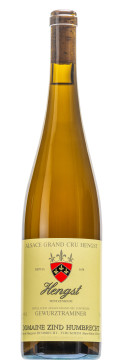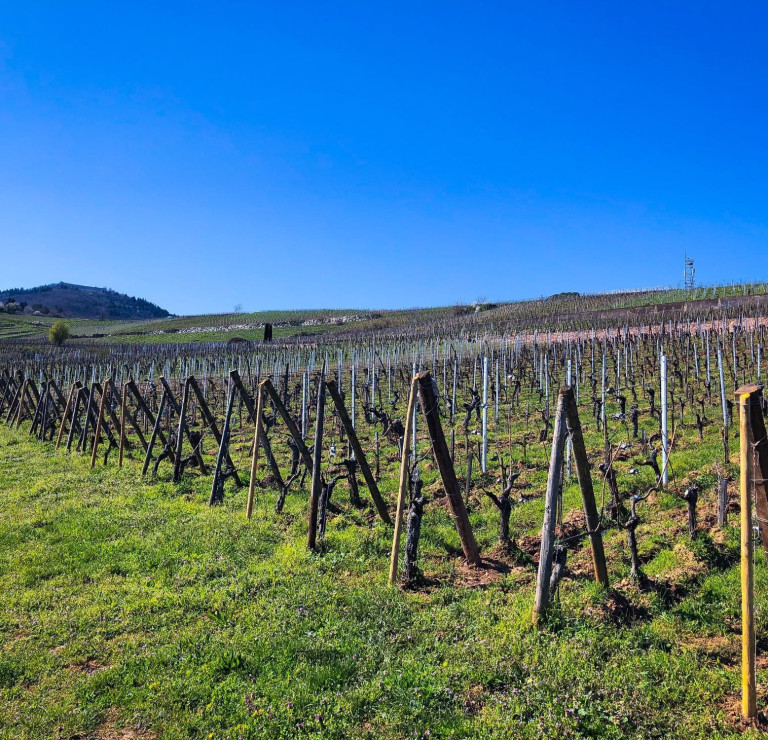
Technical presentation
| Bottling : | August 2019 |
|---|---|
| Residual sugar : | 43.8 g/l |
| Total acidity : | 2.4 g/l H2SO4 / (3.6g/l Tartrique) |
| pH : | 3.80 |
| Yield : | 45 hl/ha |
| Optimum tasting : | 2023-2048+ |
| Average age of vines : | 67 years |
| Grape variety : | Gewurztraminer |
| Terroir : | Grand Cru Hengst |
| Sweetness index : | 4 |
| Soil : | Calcareous Marl from the Oligocene period |
Description of the wine Gewurztraminer Grand Cru Hengst 2018
The Gewurztraminer Hengst is produced from two very old vines. One was planted by my grand father Emile Zind in the early 1950s, the second one by another wine producer that said that it was planted in the 1920s. We purchased this vineyard in 1978, and already then he had forgotten the exact year! Not only is the Grand Cru Hengst an amazing spot for this grape variety (dry climate, sun exposition, red limestone…), we are also lucky that the choice of the vines, made by massal selection at the time, was exemplary. Modern clones of Gewurztraminer do not pay justice to this fantastic grape variety. They were sadly chosen to maximize varietal characteristics and volume. Gewurztraminer also suffers in the current market situation as it is traditionally a richer wine that requires special attention when pairing with food. Whatever happens, Hengst will always produce some Gewurztraminer on the domaine Zind-Humbrecht ! This is such a great terroir and the 2018 is the absolute proof !

Tasting notes
04/2020 : Intense rich yellow colour. The nose has to make you travel somewhere warm and exotic. There are intense spicy, smoky complex, rich herbal aromatics that come out of the wine, slowly and persistently. The palate is serious, almost tight, displaying rich tannins and a powerful structure. This is a big wine, but not a heavy wine. It has all the energy and strength that its name would suggest ‘the stallion’. Harmonious luscious finish, quite joyous! I cannot imagine someone tasting this wine and not smile…

The Hengst Grand Cru of Wintzenheim
The Hengst was first mentioned in the 9th century in an endowment of the Murbach Abbey. The lord of Haut Landsbourg as well as the bailiff of Kaysersberg shared the feudal rights up to the Great Revolution, whilst various noble families, abbeys and the bourgeoisie of Colmar exploited important parcels.